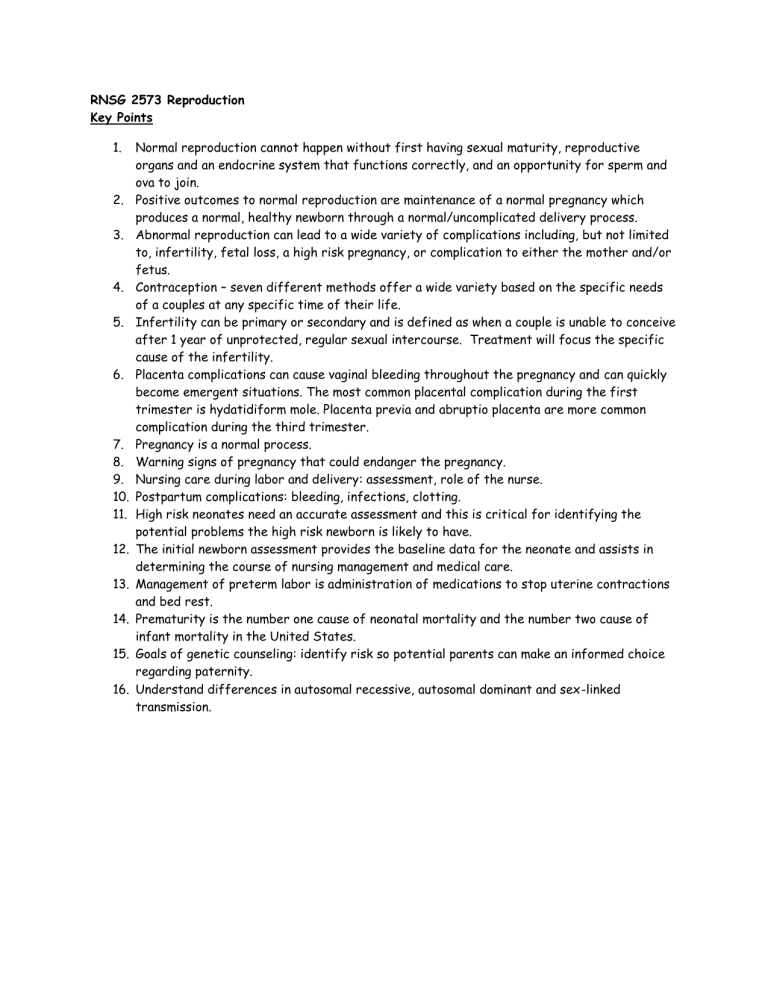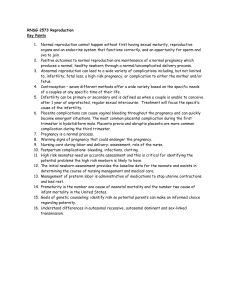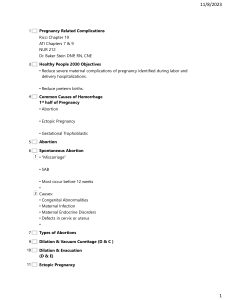RNSG 2573key points Reproduction
advertisement

RNSG 2573 Reproduction Key Points 1. 2. 3. 4. 5. 6. 7. 8. 9. 10. 11. 12. 13. 14. 15. 16. Normal reproduction cannot happen without first having sexual maturity, reproductive organs and an endocrine system that functions correctly, and an opportunity for sperm and ova to join. Positive outcomes to normal reproduction are maintenance of a normal pregnancy which produces a normal, healthy newborn through a normal/uncomplicated delivery process. Abnormal reproduction can lead to a wide variety of complications including, but not limited to, infertility, fetal loss, a high risk pregnancy, or complication to either the mother and/or fetus. Contraception – seven different methods offer a wide variety based on the specific needs of a couples at any specific time of their life. Infertility can be primary or secondary and is defined as when a couple is unable to conceive after 1 year of unprotected, regular sexual intercourse. Treatment will focus the specific cause of the infertility. Placenta complications can cause vaginal bleeding throughout the pregnancy and can quickly become emergent situations. The most common placental complication during the first trimester is hydatidiform mole. Placenta previa and abruptio placenta are more common complication during the third trimester. Pregnancy is a normal process. Warning signs of pregnancy that could endanger the pregnancy. Nursing care during labor and delivery: assessment, role of the nurse. Postpartum complications: bleeding, infections, clotting. High risk neonates need an accurate assessment and this is critical for identifying the potential problems the high risk newborn is likely to have. The initial newborn assessment provides the baseline data for the neonate and assists in determining the course of nursing management and medical care. Management of preterm labor is administration of medications to stop uterine contractions and bed rest. Prematurity is the number one cause of neonatal mortality and the number two cause of infant mortality in the United States. Goals of genetic counseling: identify risk so potential parents can make an informed choice regarding paternity. Understand differences in autosomal recessive, autosomal dominant and sex-linked transmission.





